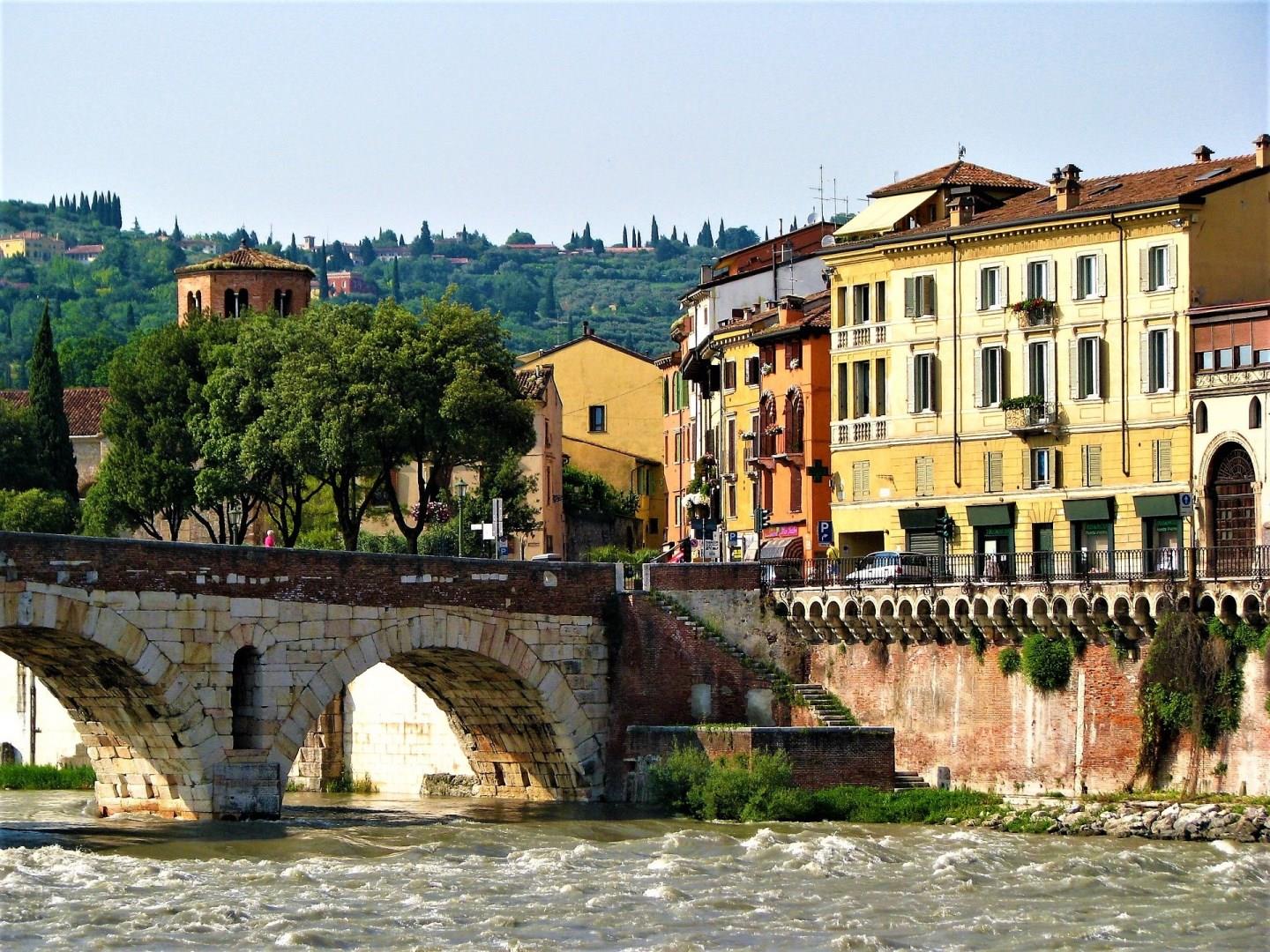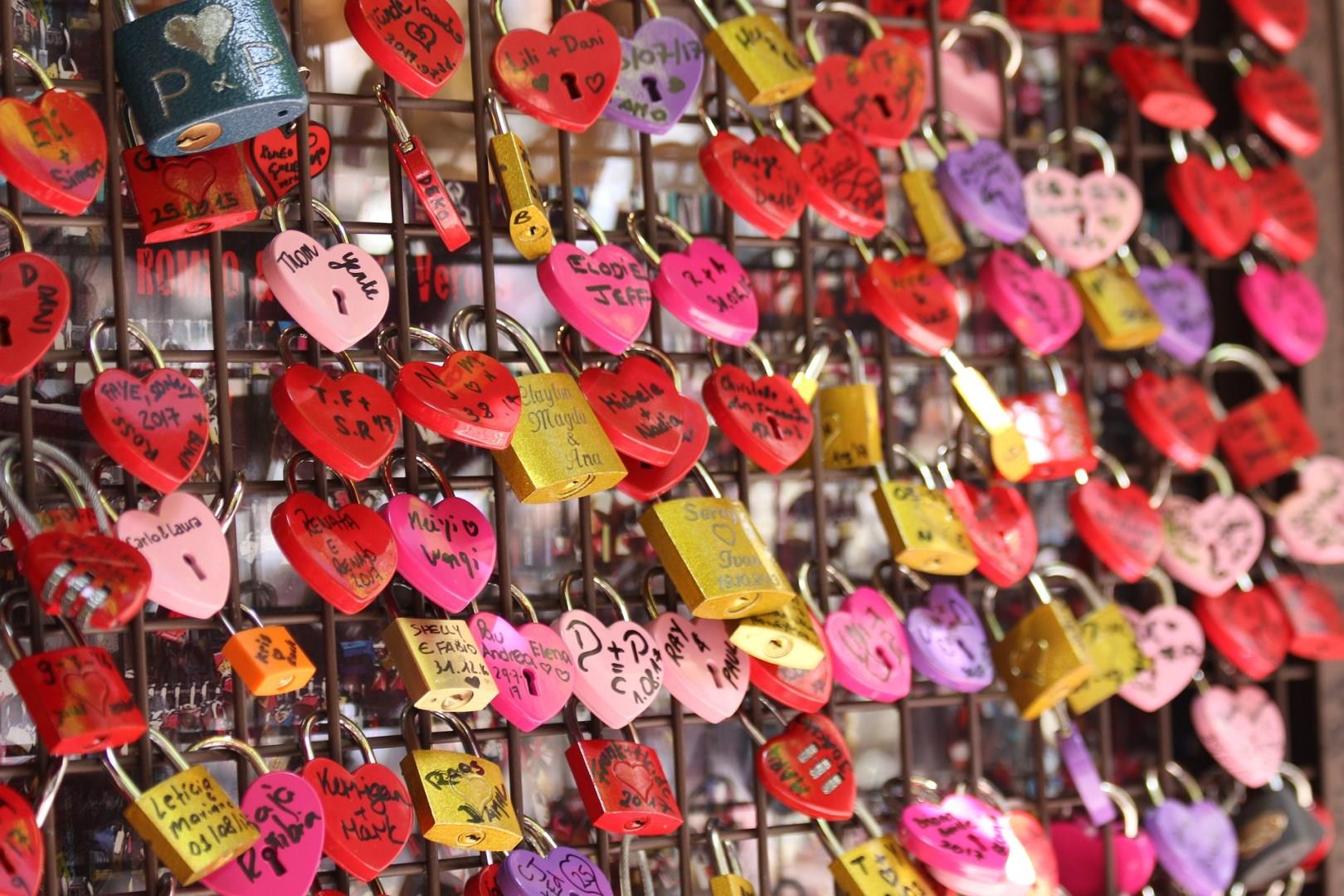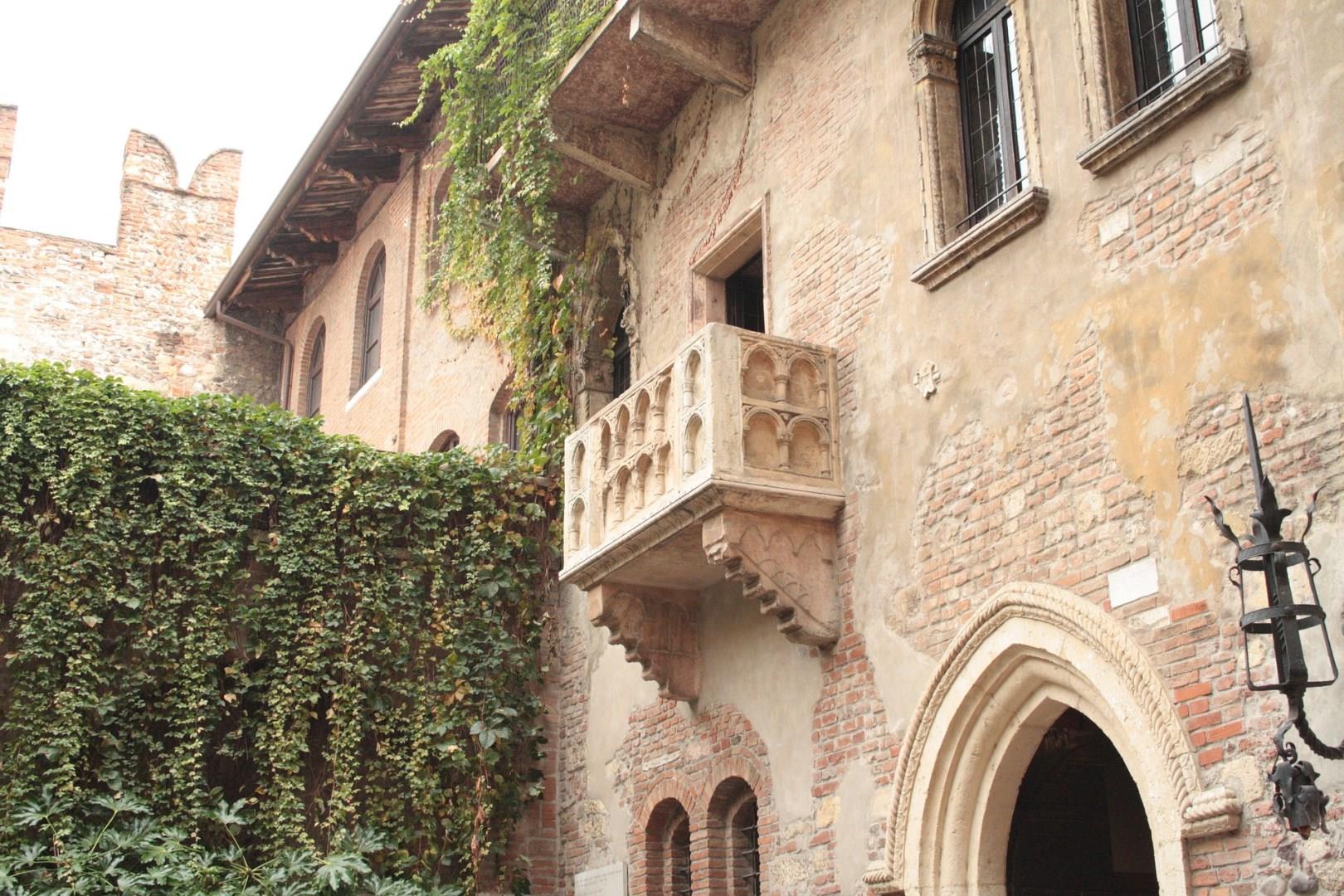Verona









Verona is situated at a bend of the Adige River in northern Italy. It is hard to imagine that antique arts, monuments that date back to Roman times, and the shadows of the world's most famous tragic lovers can add up to a smiling, buzzing city. Yet they do, thanks perhaps to Verona's talent for melding her past and her present, her ancient and new so gracefully that everything blends in easy harmony. It may be that the pleasing openness of Piazza Bra or the liveliness of the Piazza Erbe market set the buoyant tone. Or the city's character may reside in the Veronese themselves. Whatever the answer, the city reminds one of a fairground, with people out enjoying themselves.
The soft pink pitted stone of the Roman arena draws your attention, the structure's arches now as delicate in color as pieces of seashell. Though diminished from its original size, the ancient arena still holds more than 20,000 spectators for open-air performances each summer. Its once larger dimensions are betrayed by a wing of stone arches standing proudly alone.
From any angle Piazza Bra is irresistible, a good place for an afternoon rest. Italy has other generous and beautiful spaces, dignified or dazzling, but Piazza Bra's mood is more informal, more welcoming, with an inner quiet beneath the liveliness. A natural extension of Piazza Bra is Via Mazzini, a shopping street where the pace is more hectic, the crowd more dense. Baby carriages roll by, while mechanical toys hawked on corners skitter around one's feet. Even when the shops are closed, couples take their affectionate passeggiata along Via Mazzini, strolling and meeting friends. The street serves as an outdoor parlor, where one inevitably bumps into Aunt Marta and picks up the latest family gossip.
After a long look at the surrounding houses, some quite old and almost all with flowered balconies, there are pleasant decisions to be made, depending on the time one has and the slant of one's interest. Let us assume that the visitor has come to the market at the proper time, about ten in the morning, and has the day ahead and that we would not,
under any circumstances, miss Piazza dei Signori. However, instead of marching resolutely to this noble plaza of the ancient lords, let us make a short, seemingly eccentric, turn in another direction.
Via Cappello (Capulet) starts at the chapel end of the market. A short distance down the street one finds what is said to be the house and courtyard of the prosperous citizen whose daughter was Juliet. Lovers often come to Verona in homage to Romeo and Juliet, although their brief courtship and marriage and violent end would hardly seem to augur well for long wedded bliss and a house filled with bambini. Yet the story was Italian a long time before Shakespeare borrowed it,and it maintains its hold on the Italians. From here the road to Romeo's house need not be long, but it offers a rich journey with many stops and detours. The first stop is a trip up the Lamberti Tower. For a small fee one can take a lift to the top for spectacular views of the market below, out to distant steeples and hills, and down to the nearby tangle of urban spaces. Leaving the square of Piazza dei Signon, one sees small, fantastic Gothic structures protected by a lovely wrought-iron fence. These are the tombs of the Scala family, or della Scala or Scaligeri, as they are variously referred to -- overlords of Verona from 1260 to 1387.
With detours out of the way but with Shakespeare's lovers still in mind, it is time to look for Romeo's house. Immediately behind the tombs, on the street called Via Arche Scaligere, is a simple dweling. No gaudy kiosks here. The liveliest object in sight is the sign of a wineshop, Vini del Duca. Obviously Romeo has not caught the city's imagination as Juliet has, but Verona at least did him honor by engraving several of his most moving lines on a plaque.
The soft pink pitted stone of the Roman arena draws your attention, the structure's arches now as delicate in color as pieces of seashell. Though diminished from its original size, the ancient arena still holds more than 20,000 spectators for open-air performances each summer. Its once larger dimensions are betrayed by a wing of stone arches standing proudly alone.
From any angle Piazza Bra is irresistible, a good place for an afternoon rest. Italy has other generous and beautiful spaces, dignified or dazzling, but Piazza Bra's mood is more informal, more welcoming, with an inner quiet beneath the liveliness. A natural extension of Piazza Bra is Via Mazzini, a shopping street where the pace is more hectic, the crowd more dense. Baby carriages roll by, while mechanical toys hawked on corners skitter around one's feet. Even when the shops are closed, couples take their affectionate passeggiata along Via Mazzini, strolling and meeting friends. The street serves as an outdoor parlor, where one inevitably bumps into Aunt Marta and picks up the latest family gossip.
After a long look at the surrounding houses, some quite old and almost all with flowered balconies, there are pleasant decisions to be made, depending on the time one has and the slant of one's interest. Let us assume that the visitor has come to the market at the proper time, about ten in the morning, and has the day ahead and that we would not,
under any circumstances, miss Piazza dei Signori. However, instead of marching resolutely to this noble plaza of the ancient lords, let us make a short, seemingly eccentric, turn in another direction.
Via Cappello (Capulet) starts at the chapel end of the market. A short distance down the street one finds what is said to be the house and courtyard of the prosperous citizen whose daughter was Juliet. Lovers often come to Verona in homage to Romeo and Juliet, although their brief courtship and marriage and violent end would hardly seem to augur well for long wedded bliss and a house filled with bambini. Yet the story was Italian a long time before Shakespeare borrowed it,and it maintains its hold on the Italians. From here the road to Romeo's house need not be long, but it offers a rich journey with many stops and detours. The first stop is a trip up the Lamberti Tower. For a small fee one can take a lift to the top for spectacular views of the market below, out to distant steeples and hills, and down to the nearby tangle of urban spaces. Leaving the square of Piazza dei Signon, one sees small, fantastic Gothic structures protected by a lovely wrought-iron fence. These are the tombs of the Scala family, or della Scala or Scaligeri, as they are variously referred to -- overlords of Verona from 1260 to 1387.
With detours out of the way but with Shakespeare's lovers still in mind, it is time to look for Romeo's house. Immediately behind the tombs, on the street called Via Arche Scaligere, is a simple dweling. No gaudy kiosks here. The liveliest object in sight is the sign of a wineshop, Vini del Duca. Obviously Romeo has not caught the city's imagination as Juliet has, but Verona at least did him honor by engraving several of his most moving lines on a plaque.




